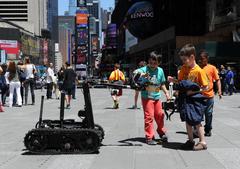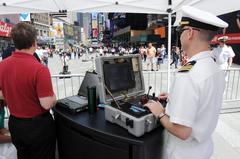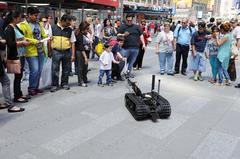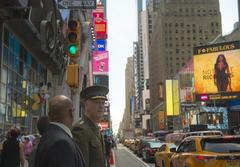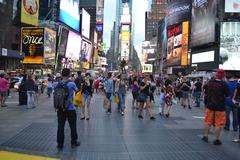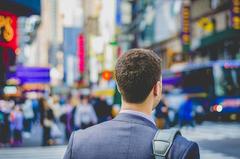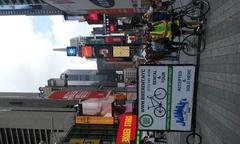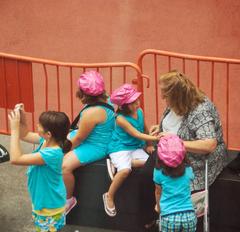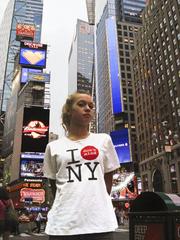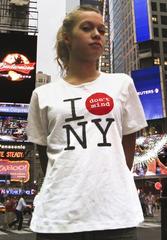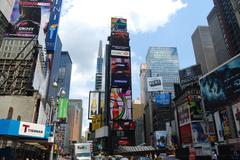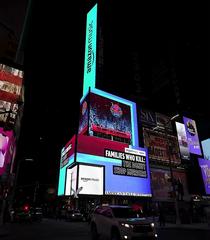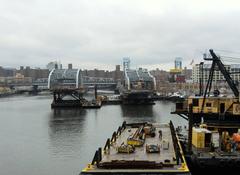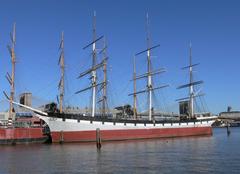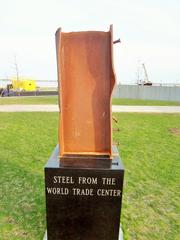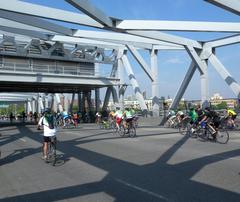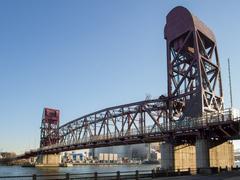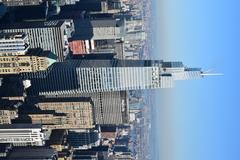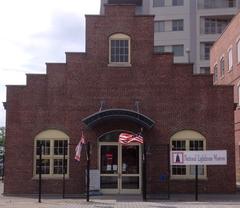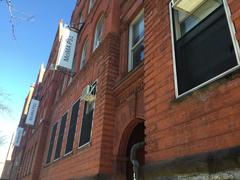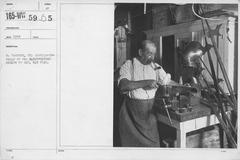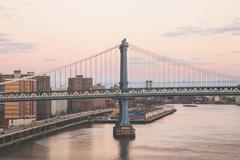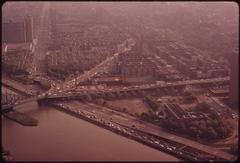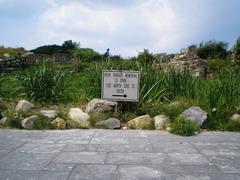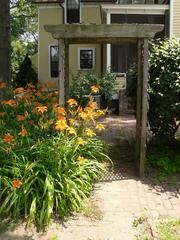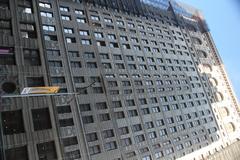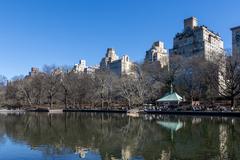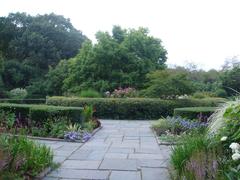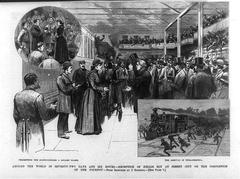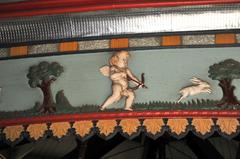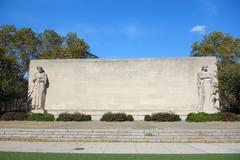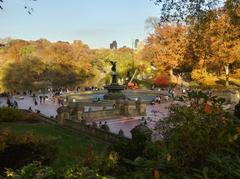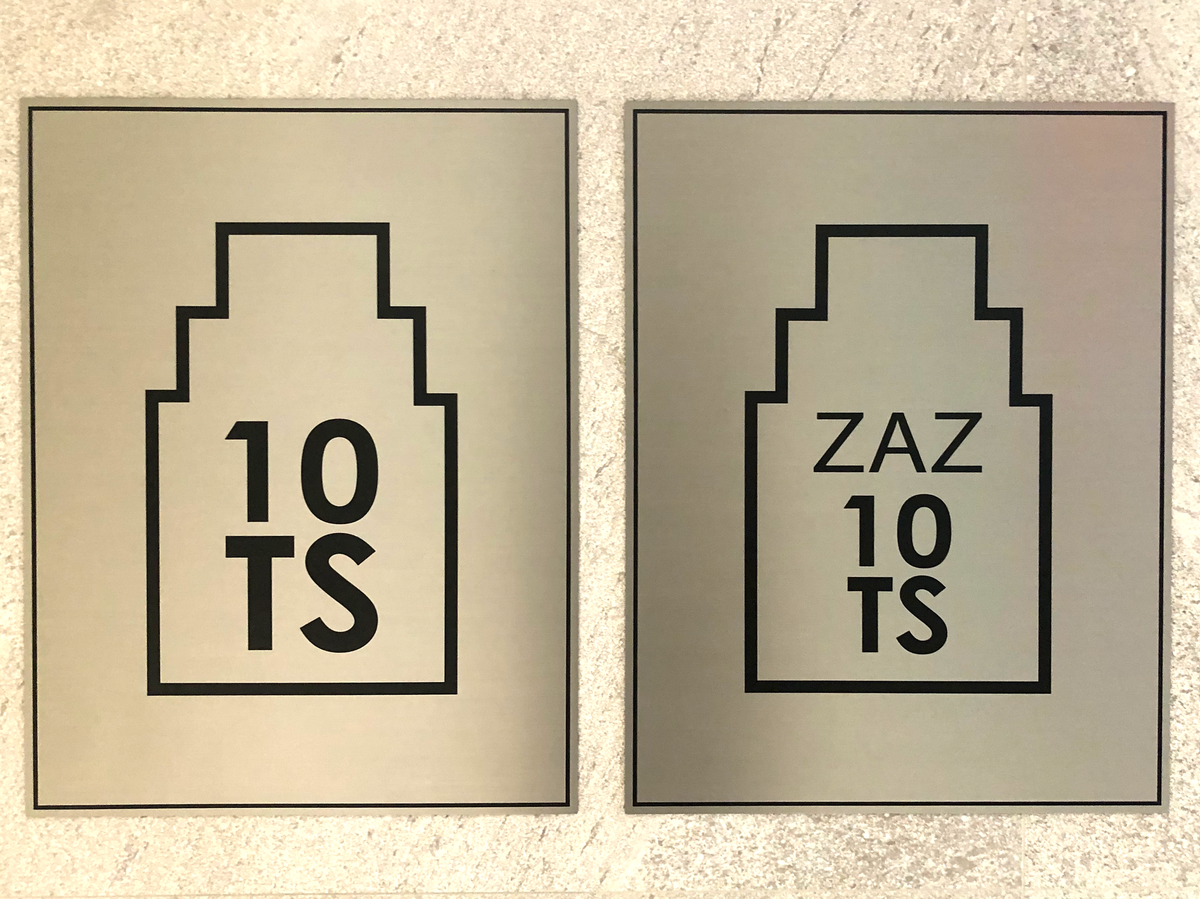
Comprehensive Guide to Visiting Times Square, New York City, United States
Publishing Date: 15/07/2024
Introduction
Times Square, famously dubbed ‘The Crossroads of the World,’ stands as an emblematic symbol of New York City’s vibrant energy and cultural significance. Originating as Longacre Square, this bustling intersection has transformed into a global tourist destination, attracting millions of visitors annually. Known for its bright lights, towering billboards, and vibrant atmosphere, Times Square encapsulates the essence of urban life and entertainment in New York City. This guide will provide a comprehensive overview of visiting Times Square, including its historical evolution, key attractions, and practical visitor information such as visiting hours and ticket prices.
The historical transformation of Times Square from a horse carriage district to a bustling commercial and entertainment hub is a testament to its resilience and ability to reinvent itself. The area was renamed in 1904 after The New York Times moved its headquarters to the then newly erected Times Building, now known as One Times Square (Wikipedia). Over the decades, Times Square has witnessed significant events and transformations, including its rise as a theatrical and commercial hub, its decline during the post-war years, and its revitalization in the 1980s and 1990s.
Today, Times Square is not only a major center for the entertainment industry but also a cultural landmark recognized worldwide. It hosts numerous events throughout the year, with the New Year’s Eve ball drop being the most famous, attracting massive gatherings and symbolizing new beginnings and unity (NYC Advisor). Whether you’re planning your first visit or returning for another adventure, this guide will ensure you get the most out of your experience in Times Square.
Table of Contents
- Introduction
- Historical Evolution
- Early Beginnings: Longacre Square
- The Birth of Times Square
- The Rise of Theatrical and Commercial Hub
- The Great Depression and World War II
- Post-War Decline and the Rise of Crime
- The 1980s: A Turning Point
- The Disneyfication of Times Square
- The 21st Century: A Global Icon
- Recent Developments and Future Plans
- Visitor Information
- Key Historical Events
- FAQ
- Conclusion
- References
Historical Evolution
Early Beginnings: Longacre Square
Times Square, originally known as Longacre Square, was named after London’s carriage district. In the late 19th century, it was a large open space surrounded by drab apartments and was primarily known for William H. Vanderbilt’s American Horse Exchange (MCNY). The area began to transform with the advent of electricity, which brought theater advertisements and street lights, making the public space safer and more inviting.
The Birth of Times Square
The transformation of Longacre Square into Times Square began in the early 20th century. The pivotal moment came in 1904 when Adolph S. Ochs, the owner and publisher of The New York Times, moved the newspaper’s headquarters to a new skyscraper on 42nd Street. This move prompted the city to rename the area Times Square (NYC Advisor). The Times Tower, the second tallest building in the city at the time, became a symbol of the area’s burgeoning importance.
The Rise of Theatrical and Commercial Hub
By the 1920s, Times Square had become a bustling hub of theaters, restaurants, and hotels. The area was known for its vibrant nightlife and entertainment options, attracting both locals and tourists. The development of public transportation, including subway lines, elevated lines, and bus routes, further facilitated Times Square’s growth as a central hub of the city (MCNY).
The Great Depression and World War II
The Great Depression of the 1930s had a significant impact on Times Square, leading to a decline in its fortunes. However, the area remained a popular entertainment district. During World War II, Times Square became a symbol of American resilience and patriotism. The famous New Year’s Eve ball drop, which began in 1907, continued to draw large crowds even during the war years (NYC Advisor).
Post-War Decline and the Rise of Crime
The post-war years saw a decline in Times Square’s fortunes. By the 1960s and 1970s, the area had become synonymous with crime, prostitution, and drug use. The once-glamorous theaters were replaced by adult entertainment venues, and the area became known for its seedy reputation. Despite this, Times Square continued to attract tourists, drawn by its bright lights and iconic status (MCNY).
The 1980s: A Turning Point
The 1980s marked a turning point for Times Square. Efforts to clean up the area began in earnest, with city officials and business leaders working together to revitalize the district. The establishment of the Times Square Business Improvement District (BID) in 1992 played a crucial role in this transformation. The BID focused on improving public safety, cleanliness, and the overall visitor experience (NYC Advisor).
The Disneyfication of Times Square
One of the most significant changes in Times Square’s history came with the so-called “Disneyfication” of the area in the 1990s. The Walt Disney Company’s decision to restore the New Amsterdam Theatre on 42nd Street marked the beginning of a new era for Times Square. This move attracted other major corporations and led to the opening of family-friendly attractions, retail stores, and restaurants. The area was transformed into a safe, clean, and vibrant entertainment district (MCNY).
The 21st Century: A Global Icon
Today, Times Square is one of the most visited tourist attractions in the world, drawing millions of visitors each year. It is known for its bright lights, towering billboards, and bustling atmosphere. The area is home to numerous theaters, restaurants, and shops, making it a must-visit destination for anyone traveling to New York City (NYC Advisor).
Recent Developments and Future Plans
In recent years, Times Square has continued to evolve. The pedestrianization of parts of the area has made it more accessible and enjoyable for visitors. The transformation of Duffy Square in 2008 and the creation of pedestrian plazas have further enhanced the visitor experience. The Times Square Alliance continues to work on improving the area, with plans to make it a hub that captures and celebrates New York City’s culture in every sense of the word (Times Square NYC).
Visitor Information
Times Square Visiting Hours - Times Square is open 24/7, but the best time to visit is in the evening when the lights are at their brightest.
Tickets - Most attractions in Times Square are free to visit, but theaters and specific events may require tickets. Check the official websites for ticket prices and availability.
Travel Tips - Use public transportation to get to Times Square. The area is well-served by subway lines, buses, and taxis. If driving, be aware that parking can be expensive and hard to find.
Nearby Attractions - Times Square is within walking distance of many other New York City landmarks, including Central Park, Rockefeller Center, and the Museum of Modern Art.
Accessibility - Times Square is accessible to visitors with disabilities, with many attractions offering accommodations such as ramps and elevators.
Key Historical Events
- 1904 - The New York Times moves its headquarters to 42nd Street, and the area is renamed Times Square.
- 1907 - The first New Year’s Eve ball drop takes place.
- 1920s - Times Square becomes a bustling hub of theaters, restaurants, and hotels.
- 1930s - The Great Depression impacts Times Square, but it remains a popular entertainment district.
- 1960s-1970s - Times Square becomes synonymous with crime and adult entertainment.
- 1980s - Efforts to clean up Times Square begin, leading to the establishment of the Times Square BID in 1992.
- 1990s - The “Disneyfication” of Times Square transforms the area into a family-friendly entertainment district.
- 2008 - The transformation of Duffy Square and the creation of pedestrian plazas enhance the visitor experience.
FAQ
What are the best times to visit Times Square? The best times to visit Times Square are in the evening when the lights are at their brightest and during special events like New Year’s Eve.
Are there any free attractions in Times Square? Yes, many attractions in Times Square are free to visit, including the famous billboards, street performances, and public plazas.
Are guided tours available? Yes, several companies offer guided tours of Times Square, including walking tours and bus tours that explore its history and landmarks.
Where are the best spots for photos? Some of the best photographic spots in Times Square include the red steps at Duffy Square, the TKTS booth, and the area around the Times Tower.
Conclusion
Times Square’s history is a testament to its resilience and ability to reinvent itself. From its early days as Longacre Square to its current status as a global icon, Times Square has undergone significant transformations. Today, it stands as a vibrant symbol of New York City’s energy and diversity, attracting millions of visitors from around the world. For more tips and updates, follow us on social media or download our mobile app.
References
- The Fascinating History of Times Square - From Longacre Square to a Global Icon, 2023, MCNY https://www.mcny.org/story/dazzling-dirty-and-back-again-brief-history-times-square
- The Fascinating History of Times Square - From Longacre Square to a Global Icon, 2023, NYC Advisor https://www.newyorkcityadvisor.com/things-to-do-in-time-square/
- Times Square - Visiting Hours, Tickets, History & Key Attractions, 2023, Wikipedia https://en.wikipedia.org/wiki/Times_Square
- Essential Visitor Tips for Times Square - Best Times, Tickets, and Attractions in NYC, 2023, NYC Tourism https://www.nyctourism.com/articles/times-square-top-things-to-do/
- Essential Visitor Tips for Times Square - Best Times, Tickets, and Attractions in NYC, 2023, Use Bounce https://usebounce.com/guides/new-york/times-square/visitor
- Essential Visitor Tips for Times Square - Best Times, Tickets, and Attractions in NYC, 2023, NYC Reviewed https://nycreviewed.com/times-square-history-importance-events-safety-tips/
- Essential Visitor Tips for Times Square - Best Times, Tickets, and Attractions in NYC, 2023, TripSavvy https://www.tripsavvy.com/best-of-times-square-1612762
- Essential Visitor Tips for Times Square - Best Times, Tickets, and Attractions in NYC, 2023, Family Destinations Guide https://familydestinationsguide.com/travel-tips-times-square/

